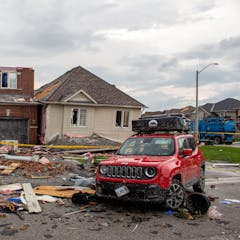
Articles on Building
Displaying 1 - 20 of 56 articles

Is Australia ready for a house construction boom? Supply chain constraints say no.

Tower cranes come in many different sizes, and many weigh more than 100 tonnes.

If we build homes on a production line, we could make them cheaper, faster and more sustainable.

Innovative materials and modular buildings offer New Zealand a way to build back better after Cyclone Gabrielle. But to do this, we need to develop the framework to support the new approach.

As with any major financial decision, you need to understand how the renovation fits with your broader life goals. Why do you want to do it?

If you’re holding off on renovating until next year expecting prices to calm down, odds are you will be disappointed.

We know how to build a truly zero carbon house. So why are we not doing it, on a massive scale?

As more companies feature wood and other bio-based products in their offices, what are opportunities and limitations of making corporate net-zero carbon pledges about building materials?

Private developers, building professionals and the government all share responsibility for building collapses.

Current building codes do not include the most efficient way to keep houses standing and intact during tornadoes.

Researchers are developing ways to lock captured CO2 into cement. It could help rebuild America’s crumbling infrastructure and deal with climate change at the same time.

Treating wood with bleach can make it transparent.

NOAA released its list of climate and weather disasters that cost the nation more than $1 billion each. Like many climate and weather events this past year, it shattered the record.

A building designed to be easily taken apart so the components can be reused is a model for much less wasteful construction. It reduces resource use and environmental impacts, and can be cheaper too.

Plastics are strong, durable, waterproof, lightweight, easy to mould, and recyclable – all key properties for construction materials.

‘Use the reinforced concrete, Luke.’

Old buildings aren’t just waste – the materials can be reused to create the cities of the future.

Developers pay more tax to refurbish than demolish and rebuild – but there’s a very easy fix.

Bamboo has been used since ancient times for building, but only in recent decades has pioneering work in Bali inspired its wider use for substantial and enduring structures.

There’s no uniformity around health and safety management programmes and practices within the construction industry.
